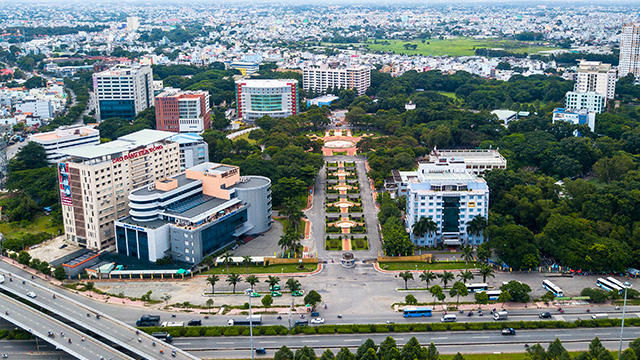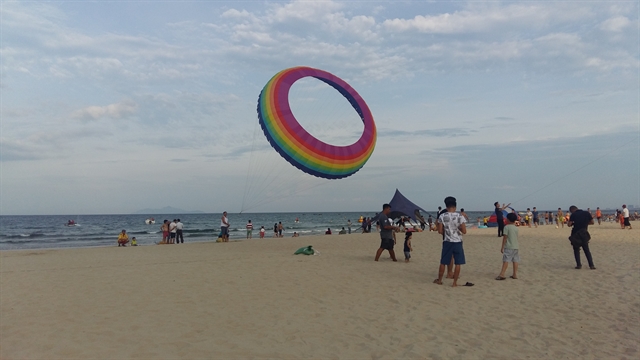 Life & Style
Life & Style

Art researcher and critic Iola Lenzi arived in Việt Nam for the first time 20 years ago and was charmed by the refined culture.
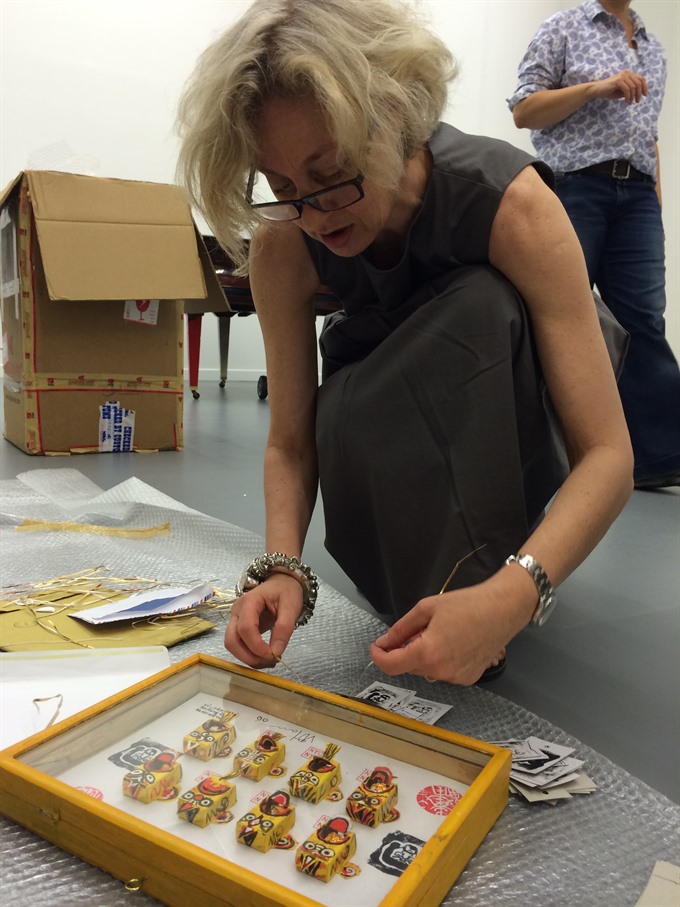 |
| On the job: Iola Lenzi installs artworks by Vũ Dân Tân at HCM City Fine Arts Museum. |
By Minh Thu
Art researcher and critic Iola Lenzi arived in Việt Nam for the first time 20 years ago and was charmed by the refined culture.
Her background is rather unusual. She was born in Canada and is a lawyer by training, but taught herself art history.
She then became a critic and curator of contemporary Southeast Asian art with a good grasp of art history.
She has a strong attachment to Vietnamese art and artists.
In the 1990s, she worked with Southeast Asian contemporary art in Singapore.
New art in Hà Nội in the mid-1990s was innovative. After seeing works by Vũ Dân Tân (1946-2009) exhibited at APT2 in Australia, and images of works by Trương Tân, Nguyễn Văn Cường, Nguyễn Quang Huy, Nguyễn Minh Thành, and Đinh Thị Thắm Poong in publications, she travelled to Hà Nội in 2000 to meet some of them and continue her research.
Lenzi first met artist Tân in 2000 together with his wife, curator and critic Natalia Kraevskaia, at Salon Natasha on Hàng Bông Street.
She has conducted research on contemporary Vietnamese art in Hà Nội and HCM City, and has been involved in numerous projects with Vietnamese artists.
 |
| Posing: Lenzi with work of Nguyễn Văn Cường at the ARTER Museum in Istanbul in 2014. |
Outside Việt Nam, Lenzi curated solo and group exhibitions in museums and spaces in Singapore, Kuala Lumpur, Hong Kong, Paris, Yangon, Jogjakarta, Bangkok, and Istanbul.
In Việt Nam, she has curated shows in Hà Nội and HCM City, mostly at the Goethe Institute Hà Nội, but also at the HCM City Museum of Fine Arts.
She has also been involved in publishing projects, working with the Việt Nam University of Fine Arts, which published her research about tradition in contemporary Vietnamese art; and with art critic and writer Đào Mai Trang, for her 2010 anthology on Vietnamese contemporary art - and an essay about Vũ Dân Tân.
Lenzi has many Vietnamese friends who are artists.
“Curating shows, and commissioning new work involves intimate bonds and trust, so, friendships blossom,” said Lenzi. “Artist-curator Trần Lương and I have worked together, enjoying friendly arguments.”
She also nurtured a friendship with Dinh Q Lê. “Dinh’s house in HCM City is filled with antiques. I was there for tea and admired an ancient Annamese celadon bowl, which he then graciously gave me.”
Lenzi’s special interest in the art of Vũ Dân Tân has led her to work on a PhD thesis on the artist, who began producing art in the 1970s.
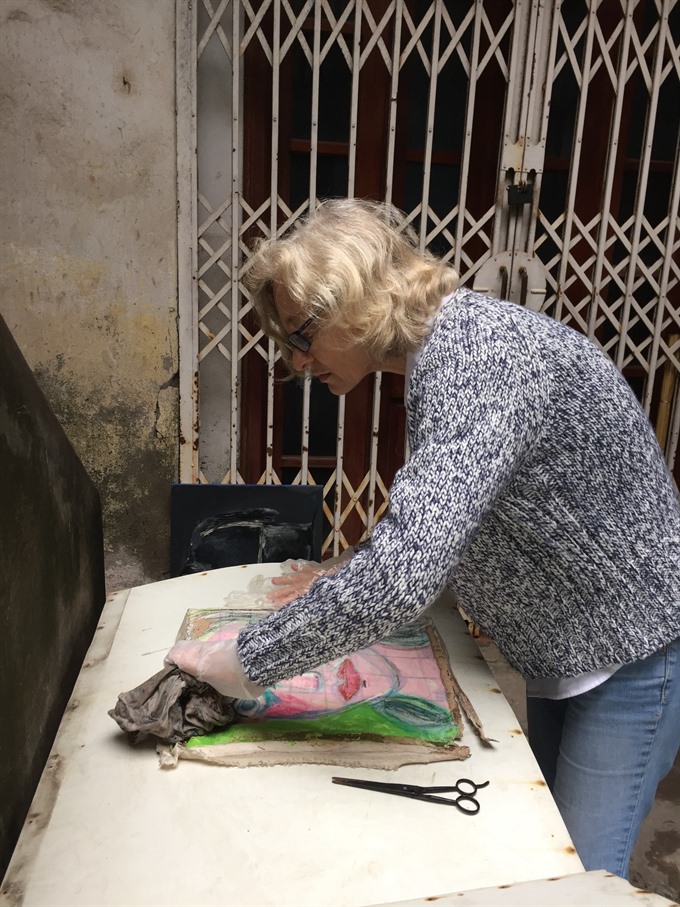 |
| Restoration: Lenzi repairing work by Vũ Dân Tân at Salon Natasha in 2015. |
“He was both prolific and unusually free in his expression, never constrained by conventional media or themes,” said Lenzi. “His work opened completely new expressive paths in Vietnamese art, but very few know his work, except superficially.
“Many do not understand that Tân’s art was conceptual even before đổi mới (renewal) period. Because I worked extensively with Tân when he was alive, had many conversations with him, commissioned new work, and analysed series in depth, I decided to write a PhD on his practice which is important in Vietnamese art history, but also in Southeast Asian and global contemporary art history.”
The thesis also examines avant-garde art by younger artists emerging in the 1990s. “Vietnamese art is hugely varied,” she said.
“The best of it is rich and sophisticated in concept, form and construction, uses many types of cultural, aesthetic and historic references. The works deal with local paradoxes and tensions that make sense to audiences everywhere and should not be abandoned.”
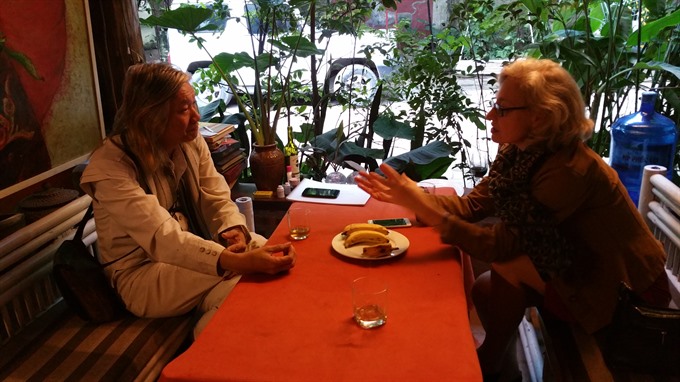 |
| Chat: Iola Lenzi talks with artist Đào Anh Khánh. Photo courtesy of Iola Lenzi |
Lenzi said Việt Nam’s pioneer contemporary artists, who emerged in early 1990s Hà Nội or before, were testing many boundaries.
“They were brave, both in the new languages of art they developed, and in the concepts and themes they examined,” she said.
“They didn’t state, they questioned. A key aspect of their work was its active engagement with what was happening around them. Some artists emerging now are trying new things too.
“As long as Vietnamese artists sustain their ability to articulate criticality, Vietnamese contemporary art will remain strong,” Lenzi added.
Apart from being an art researcher, Lenzi teaches Southeast Asian modern art history at Masters level in Singapore.
When Lenzi is far from Việt Nam, she remembers the stimulating conversations she enjoyed with her friends in the country that were always exciting, deep, and sometimes and very funny.
“People have a sense of hospitality, a civilised way of receiving strangers like me into their homes, an interest in music, and can handle complex languages in many disciplines,” she said.
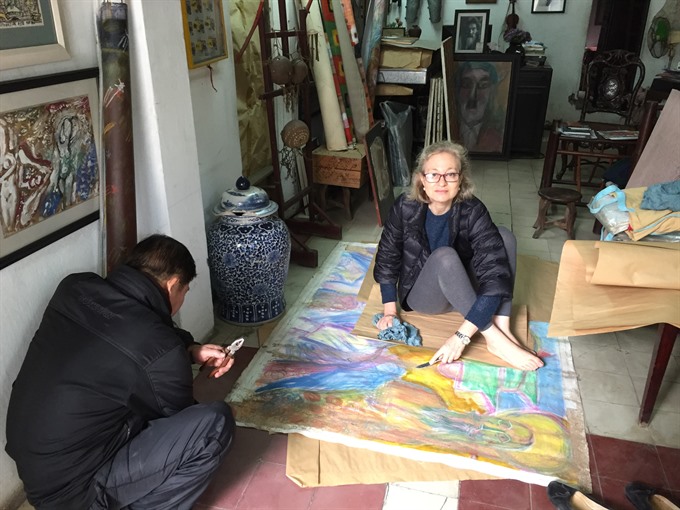 |
| Restoration: Lenzi cleans damaged work at the Salon Natasha. |
Đào Mai Trang, an editor from Culture and Arts Magazine, has known Lenzi for a long time as they both work in the field of art and share the same passion for Vũ Dân Tân’s art.
Trang is an author of many books such as Contemporary Artists of Việt Nam and Art and Talent, a foreground on the 8X contemporary artists generation of Việt Nam.
Trang said she felt grateful for Lenzi’s effort and interest in introducing Vietnamese art and Vũ Dân Tân’s art to the world.
“Approaching the culture and history of a country through contemporary art is a wonderful way to connect people,” said Trang.
“That’s the thing I learn from Lenzi through her previous and on-going projects.” — VNS



